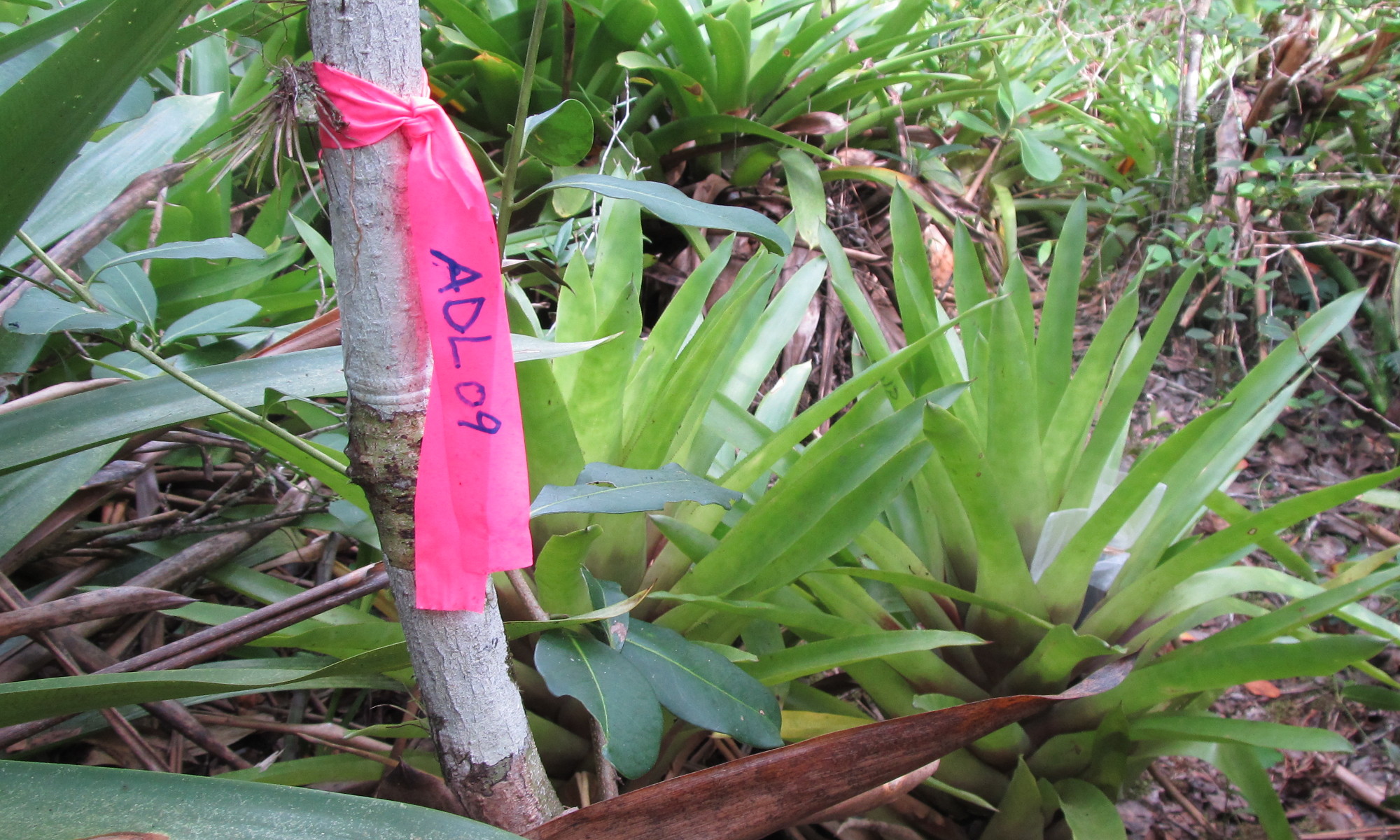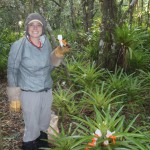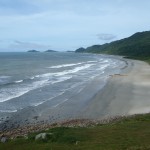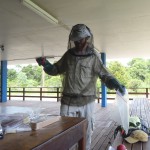In today’s lab meeting Robin and I did a little slideshow of our time in Cardoso. No-one seemed to mind that it was pictures and anecdotes with very little science. Though, we did describe our experiments and talked about our experiences. Hopefully it’s useful as Angélica prepares for her own tropical field work!
The Cardoso Island Song
While Robin, Alathea and I were living on Cardoso Island (in Brazil) with Paula, Fish and Tiago, we came up with this little song to describe our experience. It describes the research projects of each PhD student, salutes our wonderful field assistants, and pays tribute to the wonderful, fly-infested island of Cardoso.
enjoy!
[youtube=http://www.youtube.com/watch?v=Z8D31-wyPqY]
T-RFLP
not JUST a random collection of letters!
Months ago, a Dr. Suttle of the Suttle lab (a lab on campus that seems to focus a lot on the ‘metagenomics of viruses’ and other such things) gave a talk about the role viruses play in determining ecosystem functioning in the global ocean. After the talk I was curious so I did some googling – sure enough, nobody knows anything really about the microbe communities of bromeliads. The closest thing was the papers on protists that Diane published with Thomas Bell.
Of course, we have our own mission to understand the microbe community: Pavel and Jana have undergraduate (s?) busily identifying protists which are preserved in lugol’s solution. I also have some tucked-away specimens which I thought I would one day identify under the scope.
But then, a guy from the Suttle Lab comes by my office and offers the idea of T-RFLP. Apparently, what one can do is amplify the sequence of DNA that codes for some Important Gene, using a primer that targets the genes of all protists/bacteria/viruses/whatever. Then, you ‘digest’ the stuff with an enzyme that cuts up the DNA whenever a certain special sequence occurs. Where exactly that sequence is will change depending on the ‘species’ of microbe. In the end, you get a pattern of peaks that reflects the diversity of the community.
Of course, there are complications: the same species produces many peaks, and the pattern of peaks of two different species can partially overlap. It is possible to figure out what actual species are in your community IF you have a ‘library’ of possible species to look for. Apparently this is distinct from ‘barcoding’, but I’d be hard-pressed to tell you why.
Anyway, apparently it doesn’t really matter that species identification is (or may be) impossible. Two different community samples will produce two different patterns of spikes. Since my hypothesis in my side experiment was about the similarity between communities – not the actual species composition – I think it should work fine. My idea is to get all these strange-looking patterns of spikes and do ordination (PCA or something?) to test the idea that one group of communities (those with a large mosquito predator) are more variable than others (those with a small mosquito predator).
Between me and this goal are all kinds of snags: the iodine in Lugol’s solution may have destroyed all the bacteria, plus iodine apparently snarls up DNA and makes PCR difficult. My molecular contact guy is very enthusiastic, but I know so little I can’t tell if he is underestimating how difficult this is. I don’t know if I’m getting into a one-week quick’n’dirty molecular thing (which would be great), or a massive project to pioneer the extraction of DNA from Lugol’s solution (not going to happen). The next step is to a) give it a shot this Friday and b) talk to other molecular biology (can you believe they call it “Mo-Bo”) types to get some second opinions.
Looking forward to it! I’m also looking forward to Jana’s reaction to hear I have abandoned the use of a microscope to identify protists. Just so you know, when my molecular point-guy came by my office today he suggested that a sample for T-RFLP should be preserved in the field with ethanol, not Lugols. He guessed 30%, but I haven’t googled about that yet. I’m willing to give this a shot if it might provide some fun data! watch this space for more details!
Its kind of like evolution
but not really. Conway’s Game of Life is pretty fun to play with, though. It is a classic cellular automaton of white and black squares whose pattern is changed every ‘generation’ by a simple set of rules. Amazingly similar to evolution in the strange and wonderful changes that emerge!
In fact, according to the wiki on the topic, the entire mathematical field of research about cellular automaton models was sparked by the invention of this game. Does that mean that those ecological models where communities are modeled in a similar way (little colored squares, with competition occurring between neighbours and dispersal between cells, etc) are descendants of this game?
Words from the Wise
Being a grad student is hard work. It seems to me that the greatest challenge isn’t always the science, but maintaining motivation and direction despite working more or less independently for a long time. These days there’s a cottage industry of writers who are out to motivate and inspire you — some with a particular focus on academics. Still, I don’t think I’ve ever encountered a book which contains as high a concentration of quality advice as these (short, free, online) lists:
Some Modest Advice for Graduate Students is something I hope most graduate students in any discipline read. Our zoology grad students included a link to it in the orientation information for new students!
The Art of Mediocrity by Paul Keddy has been on a wall near my desk for a long time. And I still find lots of good reminders in this punchy 12-item list. My favourite right now is #4) Avoid familiarity with other living creatures.



